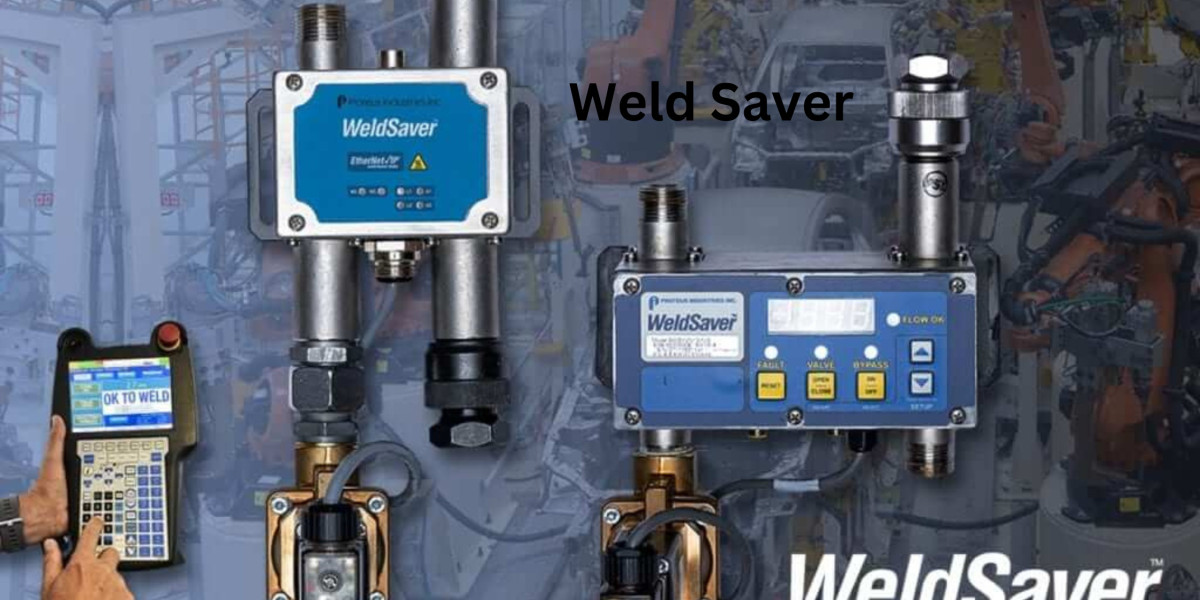Welding is an essential process across multiple industries, from automotive to aerospace. But, like many industrial processes, it comes with challenges, particularly regarding equipment maintenance and operational efficiency. Enter the weld saver, an innovative tool that has revolutionized how industries manage and protect their welding operations. Let’s dive into the benefits of weld-saver technology and why it's becoming a staple in modern welding setups.
What is a Weld Saver?
In simple terms, a weld saver is a device that prevents issues related to welding coolant systems. Welding machines generate tremendous heat, and coolant systems are crucial to maintaining the equipment’s temperature. When a coolant leak or disruption occurs, it can lead to overheating, damage to the welding equipment, and poor weld quality. Weld savers act as a safety net, detecting coolant issues early and either alerting operators or automatically shutting down the machine to prevent further damage.
The Evolution of Weld Savers
The concept of coolant management in welding has been around for decades, but earlier systems were prone to inefficiencies and failures. Modern weld savers have evolved significantly, offering advanced features like real-time monitoring, automatic shutdown systems, and integration with innovative manufacturing technologies.
How Does a Weld Saver Work?
Understanding the functionality of a weld saver is essential to fully appreciating its benefits. The device continuously monitors the coolant flow, temperature, and pressure in the welding system. If any irregularity is detected, such as a drop in coolant flow, the weld saver takes action to prevent damage.
Key Components of a Weld Saver
A typical weld saver consists of several key components, including sensors, a control unit, and a display module. The sensors are responsible for monitoring the coolant flow and detecting any anomalies. The control unit processes the data and triggers the appropriate response, while the display module provides real-time feedback to the operator.
The Role of Coolant Retraction
One standout feature of advanced weld savers, such as the WeldSaver 6 from Proteus Industries, is the coolant retraction module. This system retracts the coolant in the event of a disruption, preventing spills, contamination, and equipment damage. Coolant retraction is vital for industries prioritizing cleanliness and precision in their operations.
Key Benefits of Using a Weld Saver
Now that we know how a weld saver works let’s explore its most significant advantages.One of the primary benefits of a weld saver is its ability to prevent unexpected downtime. When a coolant system fails, it can bring production to a grinding halt. By detecting coolant issues early, weld savers prevent unplanned interruptions and keep the workflow steady.Consistent cooling is essential for high-quality welds. A coolant disruption can lead to overheating, which causes weld defects and weak joints. By ensuring optimal coolant flow, weld savers help keep the quality of the welds and minimize the need for rework.
Reducing Environmental Impact
Weld savers also contribute to a greener operation. By preventing coolant leaks and unnecessary wastage, they help reduce the environmental impact of industrial operations. Proper coolant management minimizes the risk of hazardous spills and makes the process more sustainable.The versatility of weld savers makes them useful across a variety of industries. Here’s a look at a few sectors that benefit from this technology.
Automotive Manufacturing
In automotive manufacturing, where welding is a daily occurrence, weld savers play a critical role in keeping operations smooth and efficient. Preventing coolant-related issues ensures that production lines stay up and running, leading to increased output.
Why Coolant Management Matters in Welding
Coolant management might not sound like the most exciting aspect of welding, but it’s crucial for safety and efficiency.Coolant flow is like the lifeblood of a welding machine. Without proper flow, the equipment can overheat, leading to failures that could have otherwise been avoided. Weld savers offer real-time monitoring that ensures everything runs as smoothly as possible.
How to Choose the Right Weld Saver
Not all weld savers are created equal, so how do you know which suits your operation.Consider the specific requirements of your welding setup. What is the scale of your operation? What kind of coolant system do you use? These factors can help you determine the best weld saver for your needs.
Choosing Between Different Models
There are several different models of weld savers available, each with its unique features. For example, the WeldSaver 6 Standard from Proteus Industries has a display keypad and an eVac coolant retraction module, offering advanced control and protection. Evaluate the models based on the specific needs of your operation.
Common Misconceptions About Weld Savers
Some people think weld savers could be more complicated or worth the investment. In reality, these devices are straightforward to install and use. They provide immediate returns by preventing costly downtime and equipment damage. Don’t let misconceptions keep you from embracing this beneficial technology.
Conclusion
The benefits of weld savers are clear: they protect equipment, improve weld quality, and prevent costly downtime. By ensuring optimal coolant flow and preventing leaks, weld savers allow industries to operate more efficiently and reduce their environmental impact. Whether in automotive manufacturing, aerospace, or heavy equipment production, a weld saver can make a significant difference in your welding operations. Investing in the proper weld saver, like the WeldSaver 6 from Proteus Industries, ensures that your welding processes remain smooth, reliable, and sustainable for the long term.
FAQs About Weld Savers
Q What is the primary function of a weld saver?
A weld saver is designed to monitor coolant flow in welding systems. It detects issues like leaks or drops in pressure and takes action to prevent damage to equipment, often by shutting down the system or retracting coolant.
Q How does a weld saver improve weld quality?
By maintaining consistent coolant flow, a weld saver ensures the welding equipment stays within the proper temperature range. This prevents overheating, which can cause poor welds and defects.
Q What industries benefit the most from using weld savers?
Industries that rely heavily on welding, such as automotive manufacturing, aerospace engineering, and heavy equipment production, benefit the most from using weld savers due to their ability to prevent downtime and maintain weld quality.
Q Can weld savers reduce environmental impact?
Yes, weld savers help minimize coolant leaks and wastage, reducing the environmental footprint of industrial operations. Proper coolant management also prevents hazardous spills, contributing to more eco-friendly practices.
Q What are the critical components of a weld saver?
A typical weld saver includes sensors, a control unit, and a display module. Advanced models may also feature a coolant retraction module to prevent coolant spills in case of disruption.



